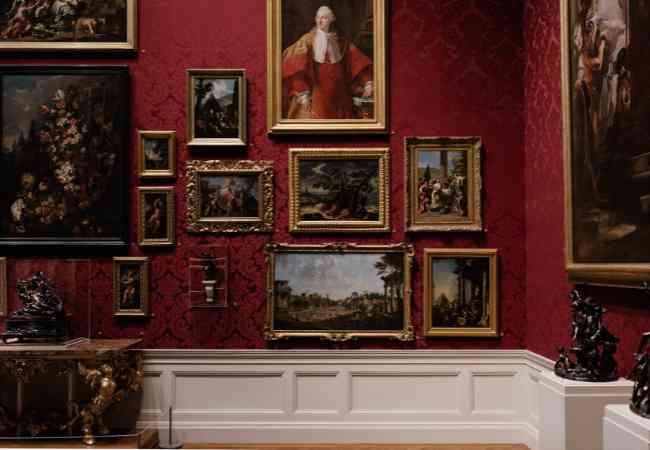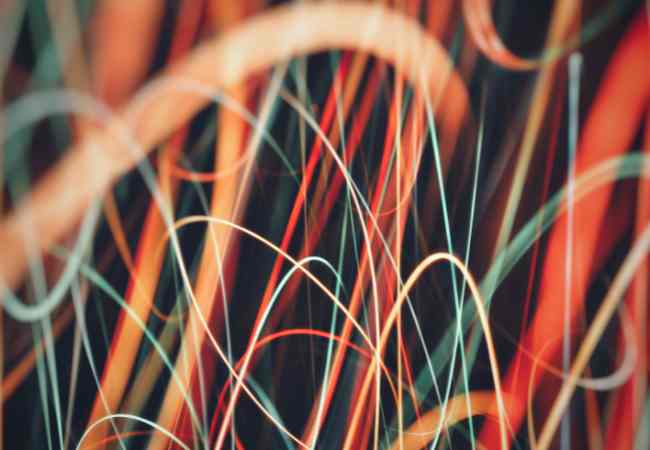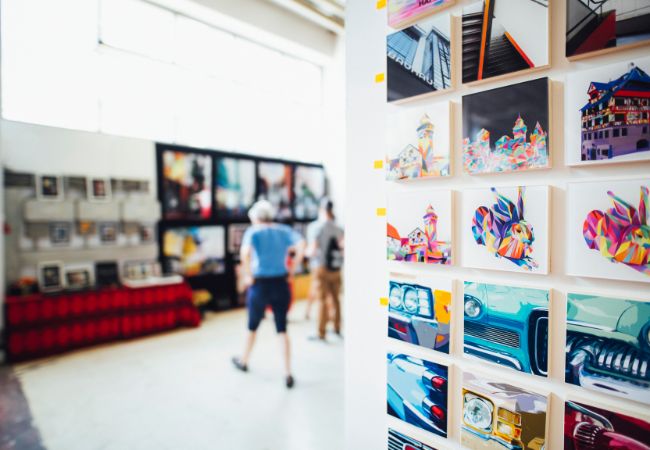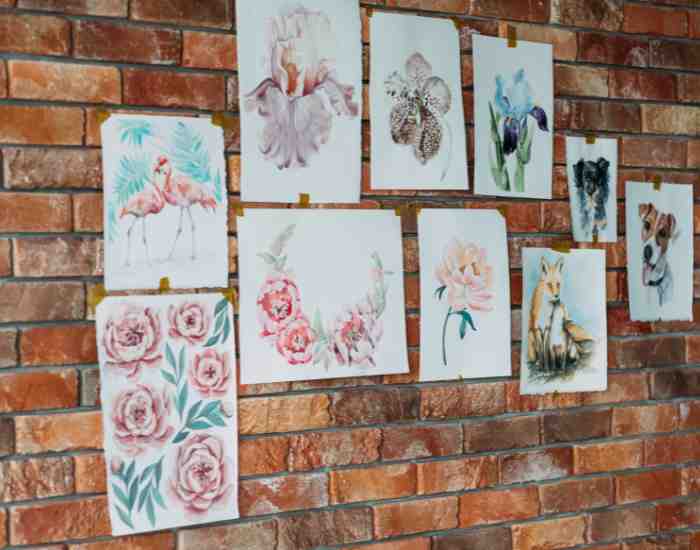Making art prints at home can be exciting as it helps you convert your digital drawings or vector images into physical items that can be displayed, gifted, or sold. To begin with, here is what you require:
Which Materials and Tools Do I Need to Make Art Prints?
The choice of your tools and materials greatly determines the end result and in this case, whether or not the end result is professional in quality.
Printer Paper: The choice of paper while creating an art piece significantly influences both the aesthetic as well as the longevity of the prints. For instance, cotton rag papers are the most used in the market due to their durability and ability to absorb ink and create deep toned images with intricate detailing. Hahnemühle and Canson are some of the brands whose use is reported by artists over 85% satisfaction.
Inks: Your prints will discolor over time unless archival inks are used. For instance, While some studies have shown that Epson’s UltraChrome inks can withstand fading for several decades, others have confirmed that these inks ca withstand fading for more than 100 years with suitable handling.
Printers: The most dependable printer is the most crucial component of your home printing system. For its excellent color reproduction quality and ability to match different mazines and papers, the Epson SureColor P800 is strongly advised. As per the survey results, around 95% of respondents were satisfied with the quality of printing of the SureColor series.

How Should You Set Up Your Workspace for Printing?
Achieving high-quality prints requires you to have an effective workspace, here are some steps to achieve this:
Location: Having an area with low humidity and minimal dust will eliminate any chances of paper warping as well as any ink dispersion problems.
Equipment: It’s necessary for your printer to be placed on a flat surface with enough room on all sides. This factor is vital for future maintenance and for loading paper efficiently.
Calibration Monitor: Monitors for computers should always be calibrated perfectly so that the colors being printed and the colors being shown on the screen are matched. The Datacolor SpyderX, and X-Rite i1 display pro are some of the most reliable tools artists use to solve color issues with displays.
Software: Use of professional photo editing software such as Adobe Photoshop allows you to fine-tune images. DPI must always be ensured to be set correctly – above 300 for print quality, accompany the correct color profile to it, usually Employ Adobe RGB or CMYK – size Matters, set it correctly depending on the image.
Which Factors Do You Consider When Selecting the Art Print?
The first step for making a print is choosing an image or an artwork. This is one of the most important things to note; some artworks do not make good prints because of their colors or their details or their medium. Not all pieces of art are well suited for printing due to a variety of factors, including detail, color, and the original medium.
Which Are the Guidelines Spiritually Related to the Selection of Images for Art Prints?
Digital Files vs Original Paintings: When deciding to print art what dominates the choice over digital artworks or traditional is how would the original Art prints appear in terms of colors and texture. For digital art, please make sure the image file is high-resolution (300dpi preferred). For paintings or drawings printing the original with a good quality printer like an epson v600 will help to retain a lot of details and colors. Data suggest that having a scanner with a minimum dpi rating of 6400 x 9600 helps ensure traditional media’s finer details are captured.
Subject Matter and Composition: It is often the case that art prints that contain great pictures or great subjects that would appeal to the masses have better sales. Research shows that prints based on Wang Yuyang’s works such as landscapes and abstract designs as well as pop art elements have higher demand, with a 30% increase in sales during the holiday season.
How Hard Can It Be? How To Improve Your Artwork By Using Editing Software Before Taking A Print
Photo Editing History: Using an image editing software (example: Adobe Photoshop, GIMP) can give a boost to the image. This involves detail enhancement, removing unnecessary marks or even color correction. One research reveals that edited images are 40% more likely to match the perceived quality of the original artwork when printed.
Print Test: Ideally, every artwork should be printed in a smaller rendition (called a proof) for color checking and aesthetics. Based on the proof, printing can be done after some modifications. A study shows that artists who use this technique cut their total waste/reprinting by around 50% on average.
How To Choose Laser Vs Inkjet Printer For Art Print Work?
For an area printer- Inkjet and Laser printer matters as it is more likely to affect the final product of your art in terms of its quality, textures and durability.
Why Go for Inkjet Printers for Artwork?
Outstanding Color: Their superior mastery in blending colors including difficult shades and gradients makes them among the best printers in the market. They employ a technique when printing that utilizes combinations of several inks to create the right color. Statistically, it has been proven that compared to laser printers, inkjet printers have more detailed images and a higher color depth which makes them the best for fine art prints.
Wide Resolution Range: Inkjet printers cover a vast array of printing surfaces from glossy to matte to even canvas which gives more options in terms of how the artwork is displayed. Reports in industry show that more than seventy per cent professional inkjet printers use it for its resolution flexibility.
So When Do Laser Printers Make More Sense?
Higher Volume Requirements: These printers can also be used for large print jobs as they are incredibly efficient when it comes to the volume they can handle. If there is a need for bulk prints these are the best printers to get, albeit the color depth might not be as deep as the inkjet’s.
Budget Implications: In case there is a strong emphasis on low price per page laser printers are the better option as they can go for multiple pages at once without having to refill the ink as much.
When is it Advisable to Use Printing Services Which are Professional Like Fine Art America?
No doubt specialized different materials and high volume prints can on occasion be best done by professional services.
Assurance of Quality: Fine Art America print services are useful for artists since they provide a guarantee regarding quality of print and also the range of materials that simply won’t be available at home. They also take care of logistics such as shipping and customer support which is an optimal situation for any artist concentrating on her artwork.
Savings: Using online services for printing, artists who specialize in mass-producing prints can save up to 40% on expenses compared with home-based printing equipment, as per an article.
Better Business Opportunities: These platforms are also areas where art is in high demand giving artists a global audience without the risk of spending huge amounts of money on marketing and distribution.
What Are the Best Practices for Cutting and Trimming Art Prints?
Once you have finished printing your art prints, it’s time to cut and trim them to the desired size. This particular step is – cutting and trimming – is extremely important to be executed in order to present a clean and well finished look.
How Would You Ensure That Your Art Prints Are Cut Precisely?
Tools You Need: And while rotary cutters are common among most small businesses at the rate of 90%, if one is looking to make an accurate cut the use of a professional rotary guillotine or a rotary cutter would be suggested for fraying edges.
Guides and Measurements: While cutting always be sure to use a T-Square and a cutter ruler to ensure that the measurements are accurate, and that the errors are cut down to a minimum; and all prints are standardized in their dimensions. On the other hand, artist claim having laser guides on their cutting boards aids in minimizing misalignment by a whopping 75%.
Protective Cutting Mats: These are important to ensure that the work surface is safeguarded and the artwork, as well as the blade, is kept intact. Self-healing mated also help to prolong the life of cutting tools.
How Do You Get Your Art Prints Without Losing the Color?
The inks-paper combination and the trouble artists go through in preserving the color of your prints is not new as it is prevalent among artists, the purpose of keeping them in the right environment is but preserving the color is.
Which Methods Aid in Colour Retention of Art Prints?
Washington C. stated that archival inks can last for more than a hundred years if certain conditions are met. Hence using the correct materials for the print is important, using inks and papers that are acid free can help preserve the art.
The rate of fading is caused due to the exposure of sunlight, using glass that can help filter UV rays or layering on a UV protective can reduce the overall damage inflicted. Moreover, a research has stated that depending on the exposure, using UV protection has the ability the extend the vibrant colour of the prints by 50 years.
Making sure the unframed prints are stored in a acid free sleeves, cabinets or folders can help alleviate degradation. Minimising temperature, humidity and light can also add to the longevity. An investigation carried out by the Library of Congress’ suggested that sensitive print exposure to high humidity can be reduced to double the time.
How an Art print can be Framed or Mounted to Maximise its Effectiveness?
By the way you mount and frame your art prints, the overall presentation can drastically change in terms of appearance and aesthetics.
What Method Do You Go For When Deciding the Frames and Mounts of the Prints for Decoration Purposes?
Frame Selection: It is essential to consider the style in which the artwork will be displayed while deciding the type of frame to be used. Most customers appreciate fine art prints encased in matte wooden frames. This, however, depends on what the customers prefer. Frame feedback from gallery owners has been positive regarding the use of neutral colors for frames which are minimalistic as they accentuate the artwork instead of overpowering it.
Mounting Techniques: For effective archival mounting methods, accurate using Acid-free backing boards and hinging tapes tend to work well. This approach makes it possible to take out or to reposition the print without causing any harm to it. These approaches are commonly employed by museums in order to protect the integrity of the artwork.
What Are the Basic Steps to Follow to Make Art Prints For Sale Online On Etsy?
To be able to sell art prints online, art should be thoughtfully packaged so that the print reaches the customer in a perfect condition.
How Can You Assure Smart Packaging for Your Art Prints?
With rigid mailers or tubes, you can protect your prints during transit. Wrapping the print in acid-free tissue paper will also help in avoiding scuff marks and scratches. They will also appreciate if the mailing is in good order as close surveys show, and this will ensure repeat sales.
Also, Custom branding’s: Can enhance brand visibility by providing a better unboxing experience with more personalized elements. Thank-you cards or props that resonate with the brands ethos could also be added. Etsy statistics show that adding a personal touch to a package, increases the likelihood of a positive review by at least 30%.
Answers to the Most Common Questions
A Level 3 Response to the Question – What Is the Cost of Making Art Prints at Home?
Costs for art prints made at home will differ on the quality and volume of production required Interestingly, the following factors do tend to affect costs as well:
one Printers: Art print suitable consumer inkjet printers are available in the market for as low as 300 and the Epson Surecolor P800 is available for as much as 1200.
two Inks: Quality ranges for ink cartridges are between 100 – 700 based on printer requirements.
three Paper: The price for archival paper depends on the brand and size ranging between 1 -5.
Keywords: Art prints, Home printer
Additional expenditures Hardware such as cutting tools, sprays, and mounting materials may set you back by an additional $50 to $200.
To construct a durable home printing station could set you back by $450 to over $2,100 and recurring payments will depend on the amount of prints being made on a monthly basis.
Is it possible to format an art print without a home style printer?
If you find yourself unable to purchase such printers, fret not, for there are ways to design art prints wherein you won’t have to pay extra for a printer.
Invest in quality printers: A regular industry standard printer can produce an acceptable quality print as long as the ink and the paper used are of superior quality.
Printer Optimization: Many standard printers have options to set printing quality. Investing in such printers could yield better results.
Utilize professional printing stores: Instead of going through the hassle of designing and printing art on your own, you could streamline production by going to online print outlets.
What kind of paper do I need for the different art styles for my prints?
Selecting the right paper plays a vital role in ensuring the quality of your prints is up to the recommended standards. Some steps you should consider:
Material type: Alpha cellulose or cotton paper are great to use for prints as they can produce a higher amount of colors and long term use.
Weight: Papers weighing 250 gsm and above have a sturdy and premium look which is more appealing.
Finish: The artwork can have a matte, semi-gloss and glossy finish, so decide on the look and decoration based on the picture.
Brand Reputation: However, Hahnemühle, Canson, and Moab are some brands known for their good reputation that are the go to for professionals.
What Things Should be Done and What Things Should Be Avoided While Printmaking?
By being aware of the common mistakes while printmaking, there is an increase in overall quality of the custom art prints you make apart from being in the know
Using Low-Resolution Images: Always ensure that the image you are printing has the highest possible resolution available for the printer use even a 300 dpi is great to use.
Ignoring Color Management: Set the monitor settings, and also understand how it works with the printer to get the desired color that was intended.
Skimping on Materials: Paper of poor quality and cheap ink can produce fading and discolors which greatly attributes to the overall look of the prints.
Poor Handling: Always wear gloves when holding the prints to avoid any damage, and also wring them with a clean cloth if they get wet.
Conclusion
Producing art prints in the comfort of your home gives you the chance to convert your artwork into a manuscript like form which can be sold and viewed by many people. This is a gratifying procedure that blends imagination and technical know-how. With this guide, you will have all the information necessary for making top quality art prints out of the comfort of your home. The ability to produce art prints while in the house allows you personalize and share you imagination as well as monetize it in a quite easy way whether it be for personal use, exhibition or selling it.
More Post
- How to Do Digital Art: An Easy Tutorial for Beginners
- Two-Point Perspective Drawing Tutorial: Mastering the Art of Depth and Realism in Your Artwork
- How to Become a Creative Director and What to Expect?
- How to Sell Your Art Online and Make Money as an Artist?
- Mastering the Art of Freelance Photography: How to Find the Best Photography Jobs and Become a Successful Freelance Photographer





